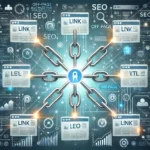Introduction
Education is changing—fast! And leading the revolution?Generative AI isn’t just some futuristic buzzword anymore. It’s a game-changer. It can write essays, explain math problems, create quizzes, generate presentations, and even act like a personal tutor.
Sounds wild? It is.
In this article, we’ll dive into the best generative AI tools transforming the way students learn and teachers teach.
Benefits of Generative AI in Education
Personalized Learning
Every student learns differently. Some get things quickly, others need more time. AI adapts to a student’s pace, offering custom lessons, examples, and explanations tailored just for them.
Automated Content Creation
Why spend hours crafting quiz questions or assignments? AI tools can generate worksheets, summaries, and even grading rubrics in seconds.
Real-Time Feedback & Assessment
Generative AI provides instant feedback, helping students correct their mistakes and improve on the spot.
Top Generative AI Tools for Education
1. ChatGPT by OpenAI
ChatGPT is like that genius friend who knows everything. It can help explain complex topics in simple language, brainstorm essay ideas, solve math problems, and even give writing tips.
Use Cases:
Doubt solving
Assignment help
Generating ideas
Pros:
Super versatile
Easy to use
Cons:
Needs fact-checking sometimes
2. Google Bard
Bard is Google’s AI chatbot, built for answering questions and sparking creativity. It integrates well with Google’s ecosystem, making it perfect for students who use Docs, Sheets, or Slides.
Why It’s Useful:
Research assistant
Project guide
Creative writing support
3. GrammarlyGO
GrammarlyGO takes the original Grammarly up a notch. Besides checking grammar, it rewrites sentences, improves tone, and even generates text based on prompts.
Perfect For:
Essay writing
Polishing assignments
Resume building
4. Canva Magic Write
Visual learning is powerful. Canva’s Magic Write lets you generate text for posters, assignments, and presentations—all with beautiful design options.
Best For:
Class projects
Posters
Visual storytelling
5. Khanmigo by Khan Academy
Khanmigo is not just another chatbot—it’s a dedicated AI tutor built into the Khan Academy platform.
Features:
Real-time learning assistance
Encourages critical thinking
Interactive explanations
6. Eduaide.AI
Eduaide is a teacher’s dream. It offers tools to create lesson plans, learning objectives, rubrics, and even classroom activities with AI assistance.
Great For:
Time-saving lesson planning
Diverse learning material
7. Scribe AI
Taking notes is a skill—not everyone’s got it. Scribe AI records lectures and turns them into detailed summaries and action items.
Why Students Love It:
Never miss a detail
Focus on listening, not scribbling
8. Otter.ai
Otter.ai turns spoken lectures into searchable transcripts. Students can review what was said, highlight key points, and even collaborate on group notes.
Features:
Real-time transcription
Works on mobile & desktop
9. Quizlet Q-Chat
Quizlet’s AI study buddy, Q-Chat, helps students quiz themselves and stay engaged through gamified learning.
Best Use:
Flashcards
Study games
Learning reinforcement
10. Notion AI
Need to write a paper, plan your study schedule, or brainstorm ideas? Notion AI can help with it all in one app.
Why It Rocks:
Productivity + Creativity
Great for organizing info
11. SlidesAI.io
Creating slides is a chore—unless you use SlidesAI. Just type in your topic and let it build a slide deck in seconds.
Perfect For:
Quick presentations
Group projects
12. Diffit.me
Diffit makes any educational content age-appropriate. Whether it’s a research paper or a news article, Diffit breaks it down to a level students can understand.
Ideal For:
Inclusive classrooms
ESL learners
13. MagicSchool.ai
Tailor-made for teachers, MagicSchool has over 50 AI tools for tasks like behavior reports, lesson generation, and family communication.
Best Part:
Built by educators, for educators
14. Synthesia
Synthesia turns text into engaging AI-generated videos. Teachers use it to create explainer videos, announcements, or even digital lessons.
Use Cases:
Online classes
Video assignments
15. Mindgrasp.ai
Mindgrasp can read and summarize long documents, lectures, PDFs, or books—so you don’t have to.
Students Love It Because:
Saves time
Boosts comprehension
Challenges and Ethical Concerns
Plagiarism & Over-dependency
Let’s face it—when AI does all the work, students might skip learning. There’s a fine line between help and overuse.
Privacy and Data Concerns
AI tools collect data. Schools need to ensure these tools are safe and student privacy is protected.
Future of Generative AI in Education
AI-Powered Virtual Teachers
Imagine a virtual teacher available 24/7. It’s coming—and it’s going to make learning more accessible than ever.
Smart Classrooms of Tomorrow
From AI-powered attendance to personalized dashboards, the future of education is looking very smart.
Conclusion
Generative AI is not just a trend—it’s the future of education. From personalized tutoring to auto-generating lesson plans, these tools are making learning easier, faster, and more engaging for everyone involved.
Whether you’re a teacher trying to save time or a student looking to stay ahead, the AI tools listed above can seriously change the way you learn and teach.
But remember—use AI wisely. It’s a tool, not a crutch.
FAQs
1. How can generative AI personalize learning?
Generative AI adapts to the learning pace, style, and preferences of each student, providing tailored lessons and feedback.
2. Is AI safe for students?
Most tools are safe, but data privacy and responsible usage are crucial. Always use trusted platforms.
3. Can AI replace real teachers?
No. AI is a tool to assist, not replace. Human connection and mentorship remain irreplaceable in education.
4. Are there any free AI tools for education?
Yes! Tools like ChatGPT (free tier), Canva, and Khan Academy offer free access with limited features.
5. What is the future of AI in the classroom?
Expect AI tutors, smart content, predictive analytics, and more personalized, tech-enhanced learning experiences.




